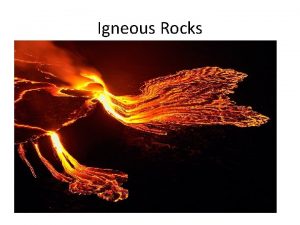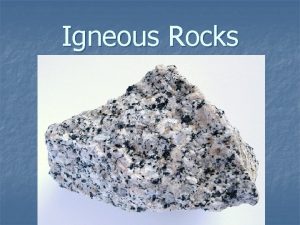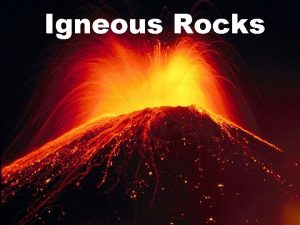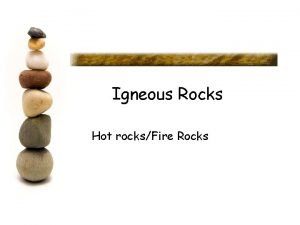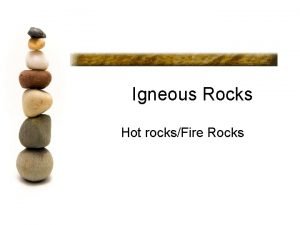Igneous Rocks Igneous Rocks are rocks that were










- Slides: 10

Igneous Rocks • Igneous Rocks are rocks that were once partially or entirely liquid • Magma is molten rock that is below the surface of the earth • Lava is molten rock that has reached the surface

• Magma and lava can be found in a variety of different settings

• The rate at which magma cools determines the texture of the igneous rock • Texture is a term used to describe the mineral sizes, shapes, and arrangements within a rock. There are 7 different textures for igneous rocks.

1) Glassy texture – Very rapid cooling, forms volcanic glass, no crystals present 2) Aphanitic texture – Rapid cooling, small to invisible crystals present (< 1 mm), generally cools above ground

3) Phaneritic texture – Large, visible crystals (1 -10 mm), generally cools under ground 4) Pegmatitic texture – Very large crystals ( 1 cm), indicates that the rate of cooling was very slow

5) Porphyritic texture – Rock contains two distinct crystal sizes, large crystals are called phenocrysts, small crystals are called the matrix. Generally due to a change in the rate of cooling 6) Vesicular texture – Rock contains vesicles (gas bubbles trapped in lava), which form from depressurization of the magma

7) Pyroclastic texture – Igneous rocks that contain pyroclasts (ejected material from explosive volcanic eruptions)

• There are several common minerals seen in igneous rock, each of which can be grouped as either Felsic (light-colored) or Mafic (darkcolored)

• Classification of igneous rocks is based on the type and amount of minerals present and the rocks texture.

• There is a relationship between the temperature of a magma and its composition. This is called Bowen’s Reaction Series














